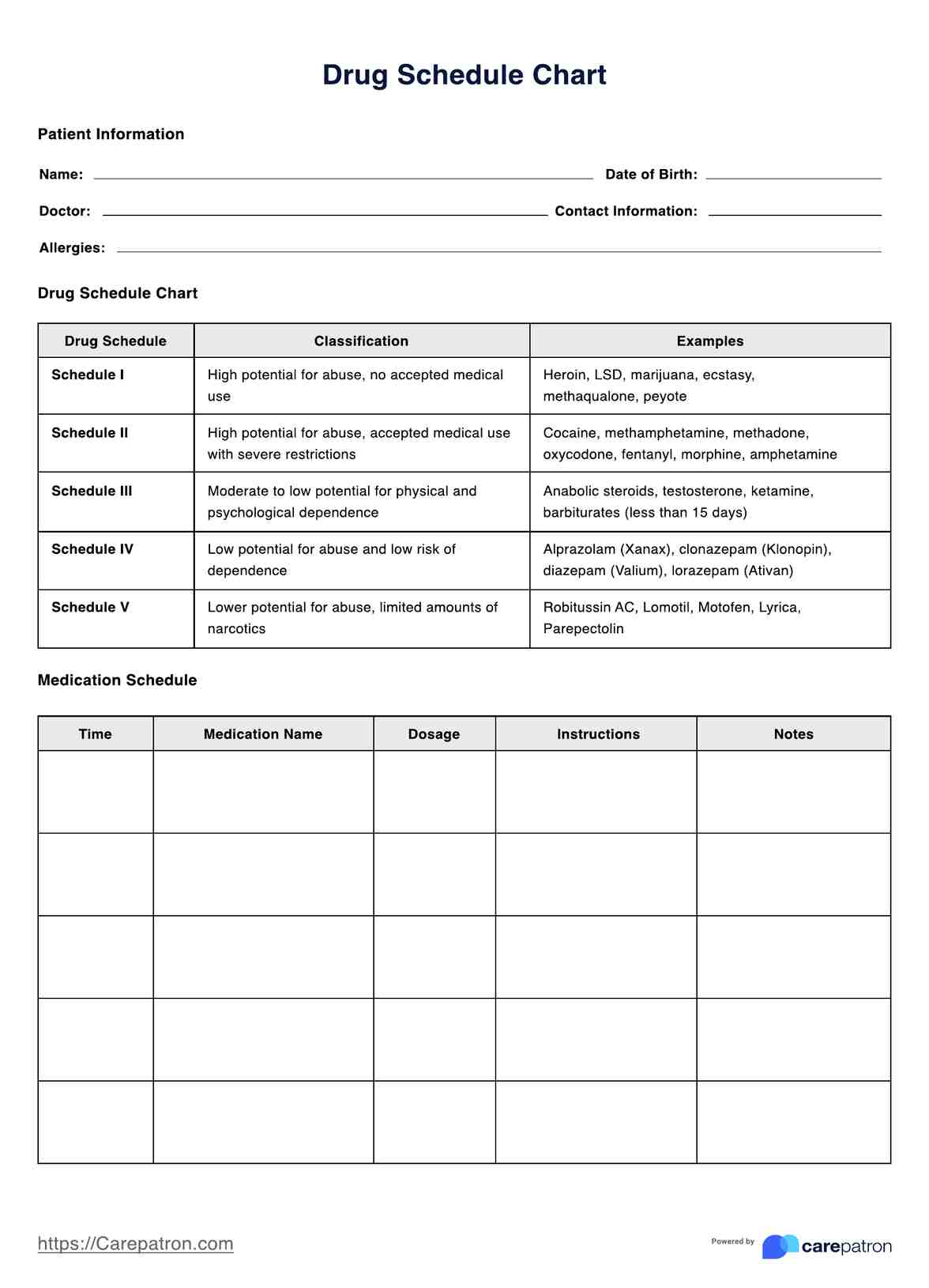Yes, the drug schedule chart template is fully customizable to suit your individual needs. You can edit the medication names, dosages, instructions, and additional notes to create a personalized medication schedule that works best for you.

Drug Schedule Chart
Learn about Drug Schedules and their use in the healthcare industry. Find out why drug schedules matter with our comprehensive guide.
Drug Schedule Chart Template
Commonly asked questions
Absolutely! Once you've completed your drug schedule chart, you can easily share it with your healthcare providers, caregivers, or family members to ensure everyone involved in your care is informed about your medication regimen and can provide support as needed.
You should update your drug schedule chart whenever there are changes to your medication regimen, such as new prescriptions, dosage adjustments, or discontinued medications. It's essential to keep your chart up-to-date for accurate and effective medication management.
EHR and practice management software
Get started for free
*No credit card required
Free
$0/usd
Unlimited clients
Telehealth
1GB of storage
Client portal text
Automated billing and online payments











